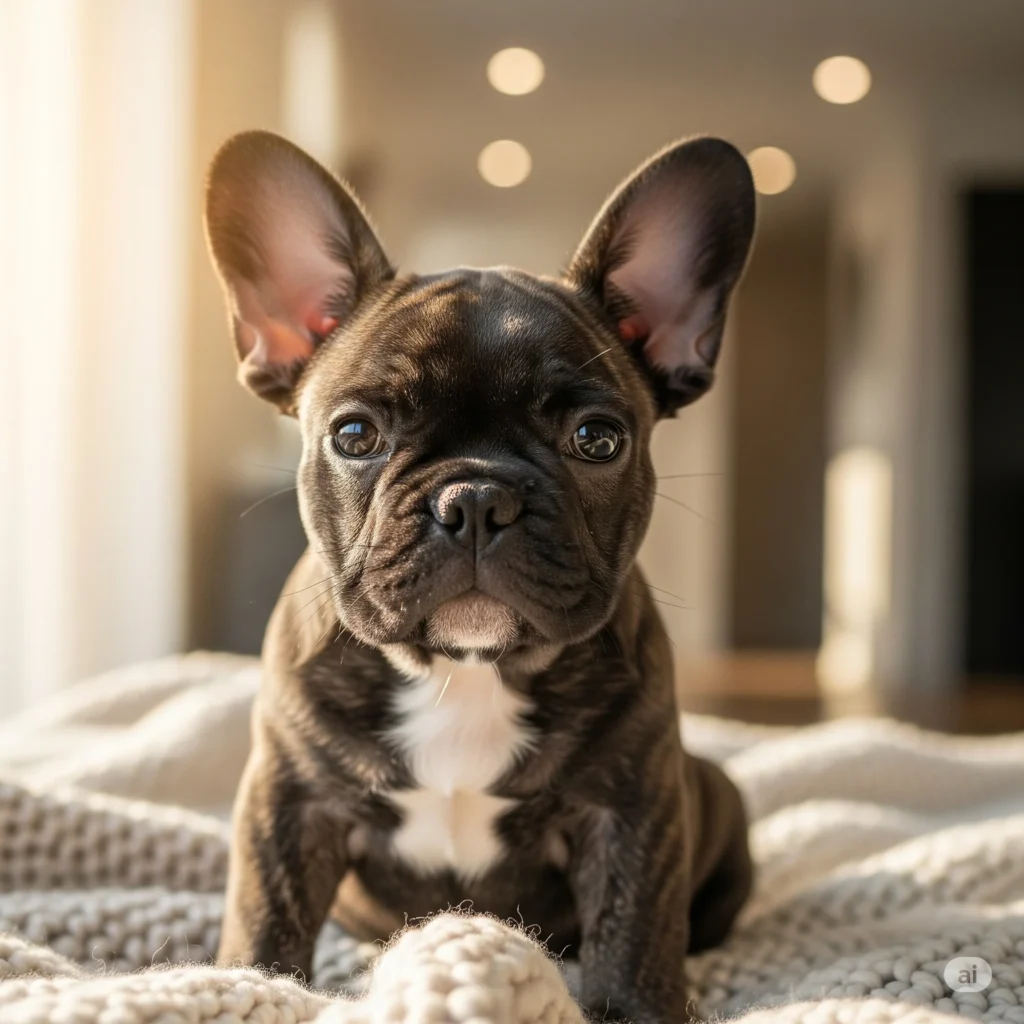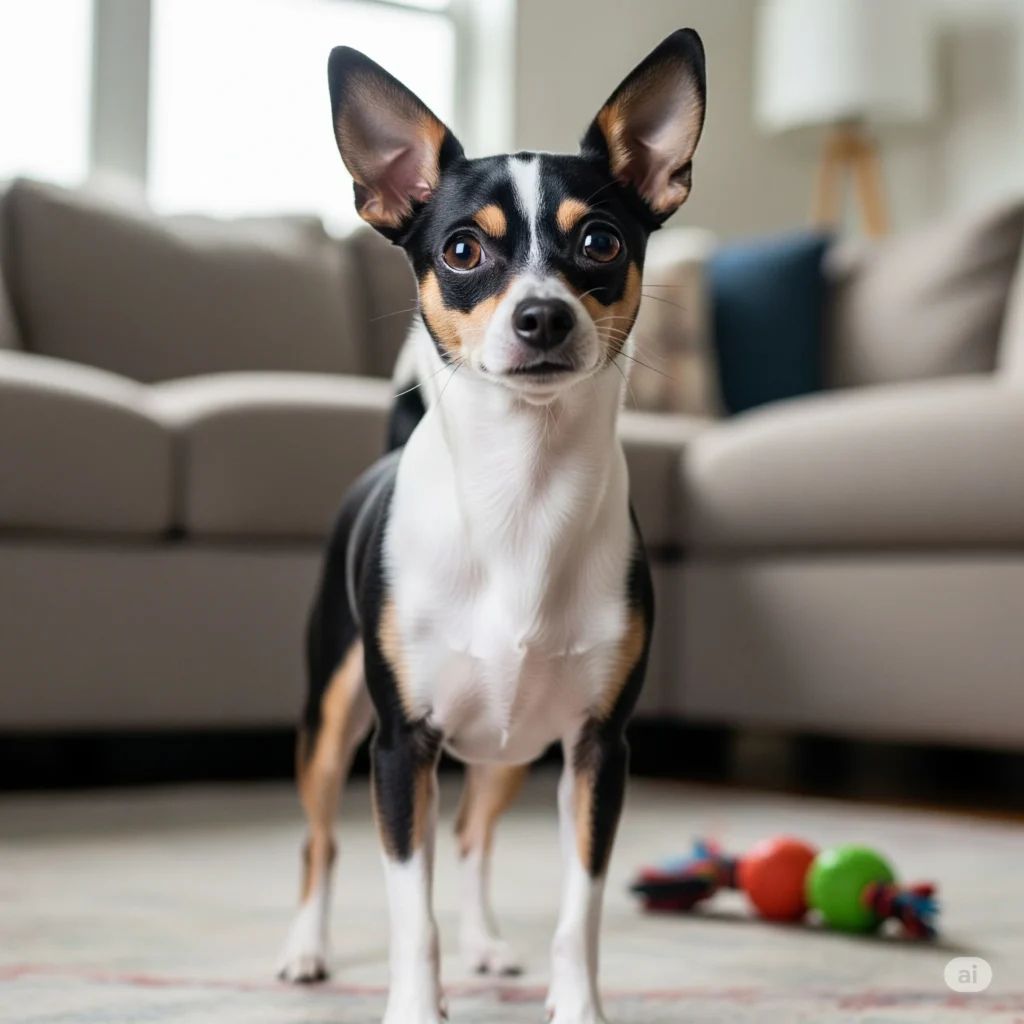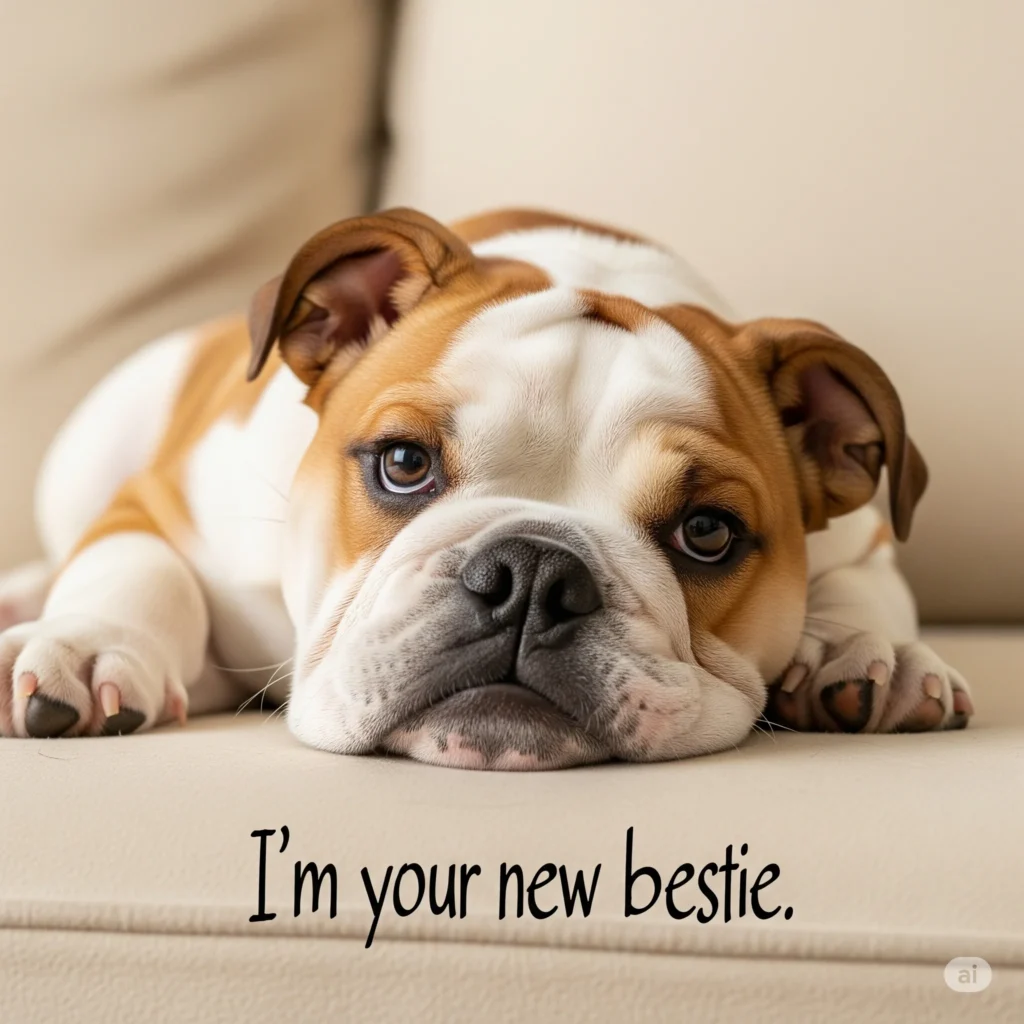
double doodle
Paws for a second and let me ask you a question. Have you ever been at the dog park and seen a fluffball so adorable you did a double-take? A dog that looks like a living, breathing teddy bear with a wagging tail and a smile that could melt your heart? Well, my friend, you might have just had your first encounter with a dog breed double doodle!
Let me tell you, as someone who’s been sniffing around the dog world for years, these pups are something special. Imagine the best parts of your favorite things—the joy of a wagging tail, the comfort of a warm cuddle, the brilliance of a clever companion—all rolled into one delightful, fluffy package. They’re often labeled “designer dogs,” but in my home, they’re simply fantastic family, brimming with more personality and love than you can shake a stick at.
If your curiosity is piqued and you’re wondering if a Double Doodle might be the perfect furry addition to your life, you’ve come to the right place! Grab a cup of coffee (and maybe a dog treat), and let’s explore the wonderful world of the double doodle dog together.
Understanding the Double Doodle Breed
Alright, let’s get down to the nitty-gritty! You hear “Doodle” all the time—Goldendoodle, Labradoodle, Bernedoodle… but “Double Doodle”? What’s the deal with the “double” part? Is it double the trouble? Double the fun? Well, from my experience, it’s definitely double the love! It’s like the bonus round of all the good doggy stuff.
What exactly is a Double Doodle?
So, what is this fabulous floof? In simple, tail-wagging terms, a Double Doodle is a charming crossbreed that brings together two already amazing “Doodle” types: the beloved Goldendoodle and the wonderful Labradoodle. Think of it as the ultimate canine cocktail, mixed with the best ingredients: the heart of a Golden Retriever, the loyalty of a Labrador, and the brains of a Poodle.
This isn’t just a random “oops” litter; it’s a thoughtful pairing by breeders who want to combine the most paw-some traits from these superstar breeds. We’re talking next-level intelligence, a willingness to learn that will make you look like a training pro, a friendly disposition that makes them the life of every party, and often, that glorious low-shedding coat that is a game-changer for so many families. The “double” cross aims to create a dog with what’s called “hybrid vigor,” which can sometimes mean a healthier pup with a fantastic blend of the best characteristics. The result? A one-of-a-kind dog that’s as clever as a Poodle, as playful as a Golden, and as devoted as a Lab.
What breeds are typically mixed to create a Double Doodle?
To really get to know the Double Doodle, we need to peek at their family tree. And let me tell you, it’s stacked with all-stars! The lineage starts with two of the most popular doodles on the block:
- Goldendoodle: This is the cuddly cross between a Golden Retriever and a Poodle. Goldens are the quintessential family dog—friendly, patient, and with a heart of gold. Poodles? Don’t let the fancy haircuts fool you; they are brilliant, athletic, and boast that famous hypoallergenic coat. Mix them together and you get the affectionate, smart, and often low-shedding Goldendoodle.
- Labradoodle: This superstar is a mix of a Labrador Retriever and a Poodle. Labs are the outgoing, energetic, and endlessly devoted friends we all know and love. Combined with the Poodle’s intelligence and coat, you get an energetic, clever, and incredibly sociable companion—the Labradoodle.
So, a Double Doodle is the adorable offspring of a Goldendoodle and a Labradoodle. It’s a multigenerational mix designed to solidify all those amazing traits, creating a dog that many of us call the “best of all worlds.” How paw-some is that?
Are there different names or variations for Double Doodles?
Oh, you bet! Just like my own dog has about ten nicknames (from “Good Boy” to “Sir Barks-a-Lot”), Double Doodles can go by a few different aliases. Don’t be confused if you hear:
- North American Retriever: This fancy name highlights their retriever roots from both the Golden and Lab sides.
- Golden Labradoodle: This one is pretty straightforward, clearly pointing to their Goldendoodle and Labradoodle parents.
- Double Doodle Retriever: A name that proudly announces their retriever heritage.
At the end of the day, these names usually refer to the same wonderful mix. It often just depends on what the breeder prefers to call them!
What is the origin or history of the Double Doodle?
The Double Doodle doesn’t have a centuries-old history like some breeds, but their story is deeply rooted in the success of their fabulous parents. It all started with the Labradoodle, which got its big break in the late 1980s. A clever breeding manager in Australia named Wally Conron crossed a Labrador with a Poodle to create a guide dog for someone with allergies. The result, a pup named Sultan, was a huge success and basically opened the floodgates for the “doodle” revolution.
The Goldendoodle followed soon after, winning hearts as the perfect low-shedding family friend. Once these two doodles became so popular, breeders started thinking, “Hmm, what if we combined these two wonderful mixes?” And just like that, the Double Doodle was born! It’s a relatively modern pup, a logical and lovely next step in the quest for the ultimate furry companion.
Characteristics and Appearance
Now for the really fun part—what do these guys actually look like? One of the most exciting things about Double Doodles is that they are like a box of chocolates; you never quite know what you’re gonna get! Each one is a unique masterpiece of fluff and charm.
What does a Double Doodle look like? (e.g., size, coat type, colors)
Picture this: a dog that looks like a cuddly teddy bear came to life. That’s the Double Doodle vibe. Their appearance can vary, even within the same litter, thanks to that wonderful genetic lottery.
- Size: They come in a range of sizes, perfect for different lifestyles! You’ve got Mini Double Doodles (often from Miniature Poodle lines), weighing a portable 20-35 pounds. Medium Double Doodles are a great middle ground at 35-50 pounds. And then the Standard Double Doodles are the big, beautiful bundles of joy, often weighing 50-70 pounds or more! They have that sturdy, athletic build that just begs for a game of fetch.
- Coat Type: This is where the Poodle genes really shine! You’ll typically see one of three fabulous coat types:
- Wavy/Fleece Coat: This is the classic Doodle coat—soft, flowy, and wavy. It’s like petting a cloud and is what gives them that iconic, huggable look.
- Curly/Wool Coat: This one is more tightly curled, like a Poodle’s. It’s super dense and is often the most allergy-friendly option.
- Straight/Hair Coat: Less common, this coat is straighter and can feel more like a Retriever’s. It’s gorgeous but does tend to shed a bit more than the others.
- Colors: Get ready for a rainbow of possibilities! Their coats can be:
- Cream, Apricot, Gold, and Red (thank the Golden Retriever side).
- Black, Chocolate, and Silver (courtesy of the Lab or Poodle).
- Parti: A stunning white base with patches of color.
- Phantom: A dramatic pattern with a solid base and lighter “eyebrow” and chest markings.
- Merle: A beautiful, swirly, mottled pattern (just be sure to ask about responsible breeding practices with merle).
With their warm, expressive eyes and floppy ears, every Double Doodle is a unique work of art. I’ve never met one that wasn’t absolutely stunning!
What are the typical size and weight ranges for Double Doodles?
As I mentioned, size can vary, but here’s a handy cheat sheet:
- Standard Double Doodle:
- Height: 20 to 26 inches at the shoulder.
- Weight: 50 to 80+ pounds. These are your big, lovable goofballs!
- Medium Double Doodle:
- Height: 17 to 20 inches at the shoulder.
- Weight: 30 to 50 pounds. A fantastic, versatile size for many families.
- Mini Double Doodle:
- Height: 14 to 17 inches at the shoulder.
- Weight: 15 to 30 pounds. All the Doodle charm in a perfectly portable package.
Remember, these are just guidelines. A good breeder can give you a better estimate based on the puppy’s parents.
Do Double Doodles shed much? Are they considered hypoallergenic?
This is the million-dollar question, especially for my allergy-prone friends! The good news is, many Double Doodles are low-shedding and can be a fantastic fit for homes with allergies.
- Shedding: It all comes down to the coat they inherit.
- Curly/Wool Coats: These are the superstars of low-shedding. The hair gets trapped in the curls instead of landing on your sofa.
- Wavy/Fleece Coats: Also typically low-shedding—this is the dream coat for most Doodle lovers!
- Straight/Hair Coats: These guys will shed more, similar to a Golden or a Lab.
Now, let’s talk about the “H” word: hypoallergenic. I always say, no dog is 100% hypoallergenic. Allergies are triggered by dander and saliva, not just hair. But Double Doodles, especially the curly-coated ones, produce less dander and shed very little, which dramatically reduces the allergens floating around your home. For many people, that makes all the difference!
What kind of coat care does a Double Doodle require?
Okay, let’s have a real talk about that gorgeous coat. It’s beautiful, but it doesn’t maintain itself! Proper grooming is not optional; it’s essential for their health and comfort.
- Brushing: This is your new best friend. To prevent painful mats and tangles, you’ll need to brush your Double Doodle at least 3-4 times a week, if not daily. Focus on those trouble spots: behind the ears, under the legs, and the tail. A slicker brush and a metal comb are your dynamic duo here.
- Bathing: A bath every 4-6 weeks, or after a particularly muddy adventure, is perfect. Pro tip: always brush them out completely before their bath. Water will tighten any existing mats into impossible knots.
- Professional Grooming: Unless you’re a grooming pro yourself, plan on a trip to the groomer every 6-12 weeks. They’ll handle the haircut, nail trim, ear cleaning, and all the tricky stuff. A popular “teddy bear cut” keeps them adorable and manageable.
- Ear Care: Those floppy ears are adorable, but they can trap moisture. A weekly check and clean with a vet-approved solution will help keep nasty ear infections at bay.
Starting a positive grooming routine when they’re a puppy is a game-changer. Make it fun with lots of treats and praise!
Temperament and Behavior
Now, let’s get to the real reason we all love dogs so much—the personality! If you’re looking for a dog that’s friendly, clever, and full of joy, you’ve hit the jackpot with the Double Doodle.
What is the typical temperament of a Double Doodle?
Imagine the friendliest, smartest, most loving dog you can, and you’re probably picturing a Double Doodle. Their temperament is simply top-tier.
- Friendly and Sociable: They’re typically the life of the party, greeting everyone with a happily wagging tail. Shyness? Not in their vocabulary.
- Intelligent and Eager to Please: With Poodle, Golden, and Lab genes, they are scarily smart and want to make you happy. This makes training feel less like work and more like a fun game.
- Affectionate and Loyal: These are true velcro dogs. They will follow you from room to room and are champions of the couch cuddle. They form incredibly strong bonds with their families.
- Playful and Energetic: They have a youthful, playful spirit that lasts their whole lives. Get ready for games of fetch and zoomies around the yard!
- Gentle (with proper socialization): With early positive experiences, they are famously gentle with children and other pets.
They really are the whole package!
Are Double Doodles good family dogs? Do they get along with children and other pets?
In a word: absolutely! Double Doodles are pretty much the poster children for fantastic family dogs.
- With Children: Their patient and playful nature makes them brilliant companions for kids. They have the energy to keep up and the gentle soul to tolerate little ones. (As always, supervision is key with any dog and young children!).
- With Other Pets: Most Double Doodles get along famously with other dogs and even cats, especially if they’re introduced properly. They often love having furry siblings to play and snuggle with.
They crave being part of the family pack and will want to be involved in everything you do.
Are they intelligent and easy to train?
You have no idea! Training a Double Doodle is one of the most rewarding experiences. They basically hit the genetic lottery for brains and a desire to please.
- Highly Intelligent: We’re dealing with three of the smartest breeds in one fluffy body. They learn new commands and tricks at lightning speed.
- Eager to Please: This is the secret sauce. They genuinely want to do what you ask, which makes them a joy to train.
My Top Training Tips:
- Start Early: Begin puppy training and socialization the day you bring them home.
- Use Positive Reinforcement: Treats, praise, and play are their love language. Harsh methods are totally unnecessary and can break their spirit.
- Keep it Fun: Their smart minds get bored easily, so keep training sessions short, fun, and engaging.
- Challenge Their Brain: Don’t forget mental stimulation! Puzzle toys and scent games are a must.
Because they’re so clever, they can learn bad habits just as quickly as good ones, so consistent, positive guidance is key from the start.
How much exercise does a Double Doodle need?
These are active, energetic pups! A bored Double Doodle is a mischievous Double Doodle, so meeting their exercise needs is non-negotiable.
- Daily Activity: Aim for at least 60-90 minutes of activity every single day. This can be split into a couple of walks and a play session.
- Fun Exercise Ideas:
- Long, sniff-filled walks or hikes.
- A good run (once they’re fully grown).
- Fetch! Their retriever DNA means they live for this game.
- Swimming! Many are natural water dogs.
- Trips to a secure dog park for social and physical play.
Don’t forget the mental workout! A tired dog is a good dog, but a mentally and physically tired Double Doodle is a great dog.
Are Double Doodles prone to barking or other behavioral issues?
While generally wonderful, they can develop a few quirks if their needs aren’t met.
- Barking: They can be vocal, especially if bored or lonely. Training and plenty of exercise usually keep this in check.
- Separation Anxiety: They love their people SO much that they can struggle when left alone for long periods. Training them to be comfortable alone is crucial.
- Chewing: Puppies, in particular, are chewing machines. Provide plenty of appropriate toys!
The recipe for a well-behaved Doodle is simple: plenty of exercise, mental challenges, training, and love.
Do they have a strong prey drive?
They have a moderate prey drive, thanks to their retriever ancestors. This means they might get the urge to chase a squirrel or a rabbit. However, this instinct often shows up as an intense love for fetching balls. With solid recall training and a leash in unsecured areas, it’s very manageable.
Health and Lifespan
Bringing a dog into your life is a long-term commitment, and understanding their health is a big part of being a responsible pet parent.
What are the common health issues or concerns in Double Doodles?
Double Doodles are generally healthy, but they can be prone to some conditions common in their parent breeds. Responsible breeding is the best defense.
Common concerns include:
- Hip and Elbow Dysplasia: A joint issue common in larger breeds.
- Eye Conditions: Like Progressive Retinal Atrophy (PRA) and cataracts.
- Heart Conditions: Such as Subvalvular Aortic Stenosis (SAS).
- Thyroid Issues: Like hypothyroidism.
- Allergies: They can be prone to skin or food allergies.
- Bloat (GDV): A life-threatening stomach condition; feed multiple small meals and avoid exercise right after eating.
Choosing a breeder who does health testing is the best way to stack the deck in your puppy’s favor.
What is the average lifespan of a Double Doodle?
With great care, love, and a little luck, your Double Doodle can be by your side for a wonderful 10 to 15 years. Proper diet, exercise, and regular vet check-ups are the keys to a long, happy life.
Are there any specific health screenings recommended for Double Doodles?
Yes, and this is so important! A reputable breeder should provide health clearances for the parent dogs for:
- Hips and Elbows: (OFA/PennHIP)
- Eyes: (CAER exam)
- Heart: (Cardiac exam)
- Genetic Tests: For conditions like vWD, PRA, and others.
Don’t be shy about asking for this paperwork. A good breeder will be proud to show it to you!
Care and Living
Ready to welcome one of these fluffy friends home? Here’s the real-world scoop on what it takes.
How much does a Double Doodle puppy cost?
Be prepared for an investment. From a reputable breeder, a Double Doodle puppy typically costs between $1,500 and $4,000+.
The price depends on the breeder’s reputation, location, and the puppy’s coat, color, and size. Remember, the initial cost is just the beginning—budget for food, grooming, vet care, and all the toys their heart desires!
What should I look for in a reputable Double Doodle breeder?
This is the most important step! A good breeder is your partner in bringing a healthy puppy home.
Look for a breeder who:
- Does ALL the health clearances we talked about.
- Is transparent and lets you visit their home/facility.
- Socializes their double doodle puppies from day one.
- Asks YOU lots of questions to ensure it’s a good fit.
- Provides a contract and offers lifetime support.
Avoid anyone who seems secretive, has multiple litters always available, or can’t provide health clearances.
What kind of food is best for a Double Doodle?
Feed them a high-quality commercial dog food with a named meat as the first ingredient. Choose a “large breed puppy” formula for pups to support their joint health. Always talk to your vet for a personalized recommendation—they know best!
Do Double Doodles do well in apartments or smaller homes?
It’s possible, but with a big caveat! Mini and Medium Double Doodles can adapt well to apartment life, but only if you are committed to their substantial exercise needs. You must be your dog’s gym and entertainment coordinator, with multiple long walks, trips to the park, and mental games every single day. A house with a yard is easier, but a dedicated apartment dweller can make it work!
How much grooming is required for a Double Doodle?
Let’s circle back to this, because it’s a big deal! I can’t stress this enough: be ready for a grooming commitment.
- Brush, brush, brush! Several times a week to prevent mats.
- Professional grooming every 6-12 weeks is a must for most owners.
- Regular ear cleaning, nail trims, and dental care.
It’s a labor of love, and for that beautiful, low-shedding coat, it’s totally worth it. Start young and make it a positive experience, and you’ll have a dog who loves spa days!
please leave comment
you may like it





sources
- https://www.petmd.com/dog/breeds/double-doodle
- https://www.dogtime.com/dog-breeds/double-doodle
- https://www.thehappypuppysite.com/double-doodle/
- https://wagwalking.com/breed/double-doodle
- https://www.hillspet.com/dog-care/dog-breeds/double-doodle
- https://www.akc.org/expert-advice/dog-breeds/doodle-breeds/
- https://www.purina.com/articles/dog/breeds/double-doodle
- https://www.pethelpful.com/dogs/Double-Doodle-Dog

